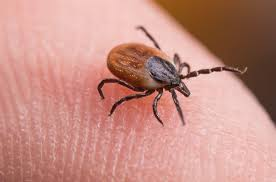
What is Marburg Virus disease?
Marburg virus disease (MVD) is a highly virulent disease that leads to severe illness and often results in death. First identified in 1967 in Germany, MVD is caused by the Marburg virus, which is transmitted to humans through contact with infected animals, primarily fruit bats.
Current situation in Rwanda
Current situation in Rwanda
The outbreak in Rwanda has claimed six lives, with most victims being healthcare workers. The Minister of Health has called for heightened preventive measures and vigilance among the population.
Symptoms and transmission
Common symptoms of Marburg virus disease include high fever, severe headache, watery diarrhoea, abdominal pain, and vomiting. The virus spreads through human contact via blood, secretions, and other bodily fluids of infected individuals.
Available treatments and supportive care
Currently, there is no specific treatment for Marburg virus disease. Supportive care remains essential for managing symptoms and providing hydration. Early medical attention is critical for those exhibiting symptoms.
Preventive measures and recommendations
To prevent the spread of Marburg virus disease, individuals should practise good hygiene, avoid contact with infected persons, and ensure thorough cooking of animal products. Caregivers must use protective equipment when caring for ill patients.
Website: International Conference on Infectious Diseases
#InfectiousDiseases, #ICID2024, or relevant year, #GlobalHealth, #DiseasePrevention, #InfectiousDiseaseConference, #PublicHealth, #Epidemiology, #DiseaseControl, #HealthInnovation, #VaccinationMatters, #PandemicPreparedness, #PathogenResearch, #OneHealth, #InfectionPrevention, #GlobalDiseaseOutbreak, #ViralResearch, #EmergingInfectiousDiseases, #HealthSecurity, #MedicalConference, #ICIDSummit
Visit Our Website : infectious-diseases-conferences.pencis.com
Nomination Link : infectious-diseases-conferences.pencis.com/award-nomination
Registration Link : infectious-diseases-conferences.pencis.com/award-registration
Member Link : infectious-diseases-conferences.pencis.com/conference-membership
Awards-Winners : infectious-diseases-conferences.pencis.com/awards-winners/
Contact us : infectious@pencis.com
Get Connected Here:
==================
Social Media Link
Twitter : twitter.com/skyla00827177
Blog : infectious2021.blogspot.com
Instagram : www.instagram.com/infectious_diseases2021
Facebook : www.facebook.com/pencis.queen
YouTube : www.youtube.com/channel
LinkedIn : www.linkedin.com/in/infectious-diseases-conferences
Wikipedia : infectiousdiseases625904580.wordpress.com
Symptoms and transmission
Common symptoms of Marburg virus disease include high fever, severe headache, watery diarrhoea, abdominal pain, and vomiting. The virus spreads through human contact via blood, secretions, and other bodily fluids of infected individuals.
Available treatments and supportive care
Currently, there is no specific treatment for Marburg virus disease. Supportive care remains essential for managing symptoms and providing hydration. Early medical attention is critical for those exhibiting symptoms.
Preventive measures and recommendations
To prevent the spread of Marburg virus disease, individuals should practise good hygiene, avoid contact with infected persons, and ensure thorough cooking of animal products. Caregivers must use protective equipment when caring for ill patients.
Website: International Conference on Infectious Diseases
#InfectiousDiseases, #ICID2024, or relevant year, #GlobalHealth, #DiseasePrevention, #InfectiousDiseaseConference, #PublicHealth, #Epidemiology, #DiseaseControl, #HealthInnovation, #VaccinationMatters, #PandemicPreparedness, #PathogenResearch, #OneHealth, #InfectionPrevention, #GlobalDiseaseOutbreak, #ViralResearch, #EmergingInfectiousDiseases, #HealthSecurity, #MedicalConference, #ICIDSummit
Visit Our Website : infectious-diseases-conferences.pencis.com
Nomination Link : infectious-diseases-conferences.pencis.com/award-nomination
Registration Link : infectious-diseases-conferences.pencis.com/award-registration
Member Link : infectious-diseases-conferences.pencis.com/conference-membership
Awards-Winners : infectious-diseases-conferences.pencis.com/awards-winners/
Contact us : infectious@pencis.com
Get Connected Here:
==================
Social Media Link
Twitter : twitter.com/skyla00827177
Blog : infectious2021.blogspot.com
Instagram : www.instagram.com/infectious_diseases2021
Facebook : www.facebook.com/pencis.queen
YouTube : www.youtube.com/channel
LinkedIn : www.linkedin.com/in/infectious-diseases-conferences
Wikipedia : infectiousdiseases625904580.wordpress.com












